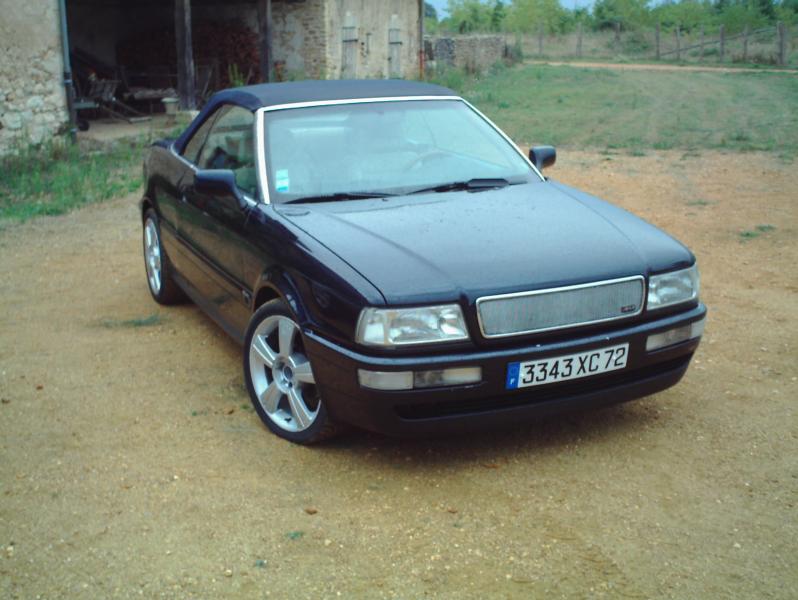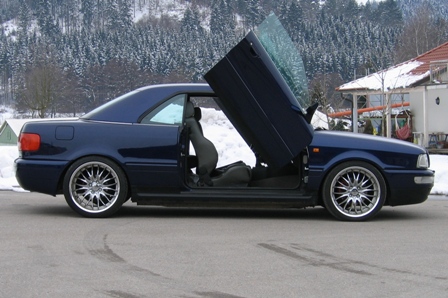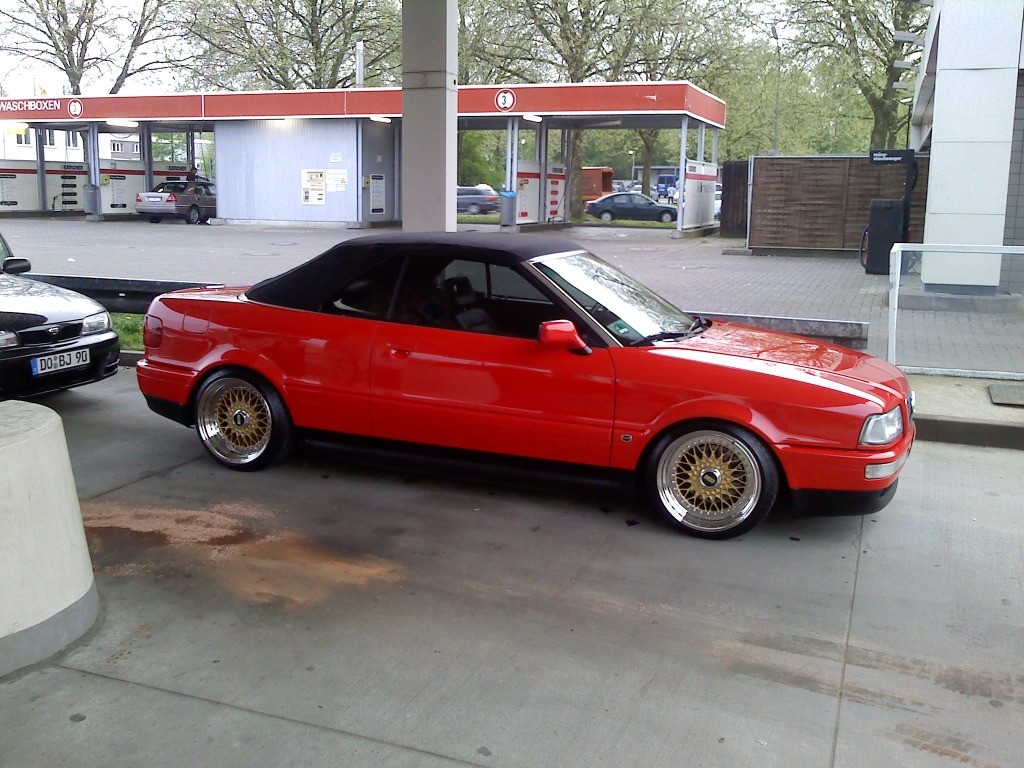Audi / Audi 80 Cabriolet 23E

Specs
| Audi 75 L | manual | 76HP (55 kW) @ 5000 rpm | |
|---|---|---|---|
| Audi 75 L Variant | manual | 76HP (55 kW) @ 5000 rpm | |
| Audi C14/35 Alpensieger | manual | 35HP (26 kW) @ 1700 rpm | |
| Audi Nuvolari quattro | n/a | 599HP (440 kW) @ 0 rpm | |
| Audi Roadjet Concept | automatic | 300HP (220 kW) @ 7000 rpm | |
| Audi Variant | manual | 65HP (48 kW) @ 5000 rpm | |
| Audi Variant 1.7 | manual | 101HP (74 kW) @ 5500 rpm |
Worldwide Trends
GEO Interests
Videos / Audi 80 Cabriolet 23E
Audi 80 Cabriolet 2.6 HD-Video
Audi 80 B4 Cabrio 1.8T
Audi 80 Cabrio with glass rear window
Audi 80 Cabrio 2,8E GRIP
Audi 80 cabriolet 23e- Some unique and rear among cars
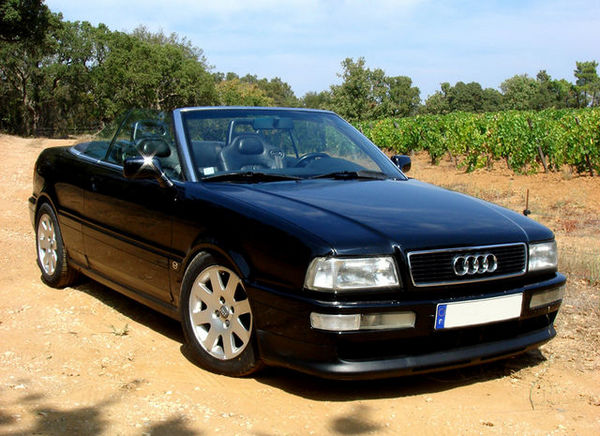 Audi commenced its all-new audi 80 80 Cabriolet form in 1991. Unlike the sedan and avant variants of the Audi 80 that availed from new B4 platforms, the Cabriolet was founded on the 1989 Audi Coupe. The cause why the German manufacturer didn't build their emblem new cabriolet on the new platform was because of the heavy re-engineering involved in the model's output. All forms fitted with petrol motors came with optional Quattro enduring four-wheel-drive, while sports suspension was available as standard equipment. Also, the Audi Cabriolet featured a supple peak - world premiere characteristic for the German vehicle manufacturer - and underwent its first facelift in 1998, when it obtained redesigned bumpers, new headlights and equipment clusters. It went out of output in 2000, being replaced by Audi TT's new Roadster. The audi 80 cabriolet 23e is a compact executive vehicle made by the German vehicle manufacturer Audiand the time interval was from 1966 to 1996. The coupe and convertible forms were not badged as constituents of the range but shared the identical platform and many components.
Audi commenced its all-new audi 80 80 Cabriolet form in 1991. Unlike the sedan and avant variants of the Audi 80 that availed from new B4 platforms, the Cabriolet was founded on the 1989 Audi Coupe. The cause why the German manufacturer didn't build their emblem new cabriolet on the new platform was because of the heavy re-engineering involved in the model's output. All forms fitted with petrol motors came with optional Quattro enduring four-wheel-drive, while sports suspension was available as standard equipment. Also, the Audi Cabriolet featured a supple peak - world premiere characteristic for the German vehicle manufacturer - and underwent its first facelift in 1998, when it obtained redesigned bumpers, new headlights and equipment clusters. It went out of output in 2000, being replaced by Audi TT's new Roadster. The audi 80 cabriolet 23e is a compact executive vehicle made by the German vehicle manufacturer Audiand the time interval was from 1966 to 1996. The coupe and convertible forms were not badged as constituents of the range but shared the identical platform and many components.
The technical specifications of the car
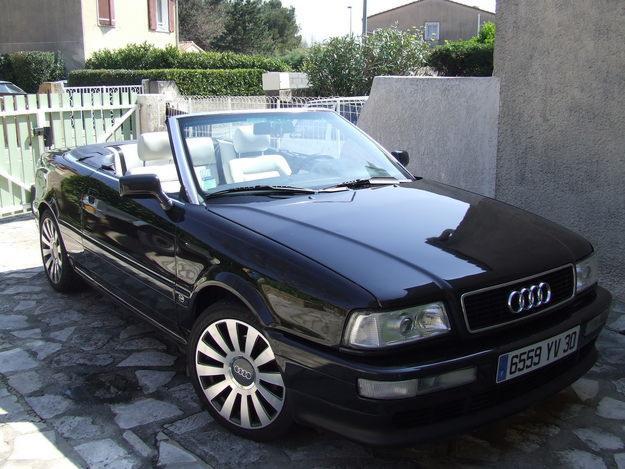 Now conversing about the number of cylinders the car has 5 cylinders and the displacement is 2309 centimeters cube. The power of the vehicle is 98 KW at 5500 RPM, 133 HP at 5500 RPM, and 131 BHP at 5500 RPM. The torque of the vehicle is 137 lb-ft at 4000 RPM and 186 Nm at 4000 RPM. The vehicle has a multipoint fuel injection system which is a cause for the high presentation of the car. The fuel which is required by the car is petrol and the vehicle has a carbon-di-oxide emission of 218 gm/km. The vehicle has a top speed of 123 mph or 198 km/hr. and the acceleration of the vehicle is 10.8 s. The car has a fuel consumption of 19.1 mph in the city and in the main road the car gives a mileage of 34.6 mpg in the main road. Thus the vehicle is very much fuel effective and thus for the consumers it is of a great advantage. The vehicle has ventilated disc brakes in the front car tires and discs in the back car tires. The dimensions of the tires are 195/65 VR15.
Now conversing about the number of cylinders the car has 5 cylinders and the displacement is 2309 centimeters cube. The power of the vehicle is 98 KW at 5500 RPM, 133 HP at 5500 RPM, and 131 BHP at 5500 RPM. The torque of the vehicle is 137 lb-ft at 4000 RPM and 186 Nm at 4000 RPM. The vehicle has a multipoint fuel injection system which is a cause for the high presentation of the car. The fuel which is required by the car is petrol and the vehicle has a carbon-di-oxide emission of 218 gm/km. The vehicle has a top speed of 123 mph or 198 km/hr. and the acceleration of the vehicle is 10.8 s. The car has a fuel consumption of 19.1 mph in the city and in the main road the car gives a mileage of 34.6 mpg in the main road. Thus the vehicle is very much fuel effective and thus for the consumers it is of a great advantage. The vehicle has ventilated disc brakes in the front car tires and discs in the back car tires. The dimensions of the tires are 195/65 VR15.
Some other information about the car
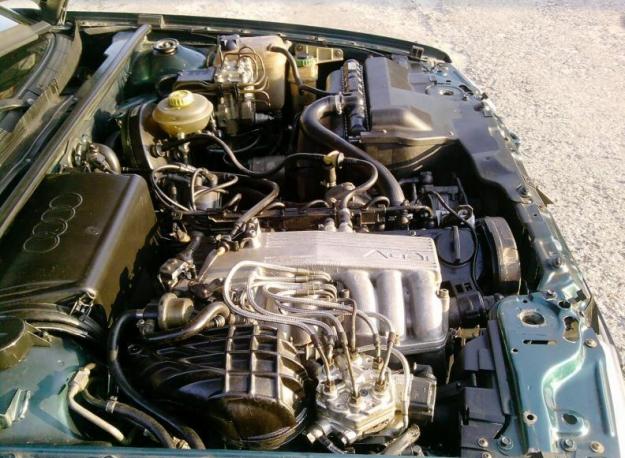 The Audi 80 was first equipped with 1.3- and 1.5-litre SOHC straight-4 gasoline motors. The interior combustion engines were available in various rated power outputs. For the 1.3 L motors, (identification cipher: ZA) was ranked at 55 PS (40 kW; 54 BHP), cipher: ZF was ranked at 60 PS (44 kW; 59 BHP). The 1.5 L (codes: ZB, ZC) at 75 PS (55 kW; 74 BHP) for the ZB and 85 PS (63 kW; 84 BHP) for the ZC. On the dwelling market, two- and four- doorway saloons were available in groundwork trim (55 or 60 PS, called easily Audi 80 and 80 S, respectively), as L forms (LS with 75 PS motor) or as a more luxurious GL (85 PS only). The audi 80 cabriotet 23e had a MacPherson strut front suspension, and a C-section beam back axle established by trailing arms and a Pan hard rod, and utilizing coil springs and telescopic dampers. Audi's conceive and development efforts paid off throughout the 1973 European vehicle of the Year competition where the 80 won ahead of the Renault 5 and the Alfa Romeo Alfetta.
The Audi 80 was first equipped with 1.3- and 1.5-litre SOHC straight-4 gasoline motors. The interior combustion engines were available in various rated power outputs. For the 1.3 L motors, (identification cipher: ZA) was ranked at 55 PS (40 kW; 54 BHP), cipher: ZF was ranked at 60 PS (44 kW; 59 BHP). The 1.5 L (codes: ZB, ZC) at 75 PS (55 kW; 74 BHP) for the ZB and 85 PS (63 kW; 84 BHP) for the ZC. On the dwelling market, two- and four- doorway saloons were available in groundwork trim (55 or 60 PS, called easily Audi 80 and 80 S, respectively), as L forms (LS with 75 PS motor) or as a more luxurious GL (85 PS only). The audi 80 cabriotet 23e had a MacPherson strut front suspension, and a C-section beam back axle established by trailing arms and a Pan hard rod, and utilizing coil springs and telescopic dampers. Audi's conceive and development efforts paid off throughout the 1973 European vehicle of the Year competition where the 80 won ahead of the Renault 5 and the Alfa Romeo Alfetta.














